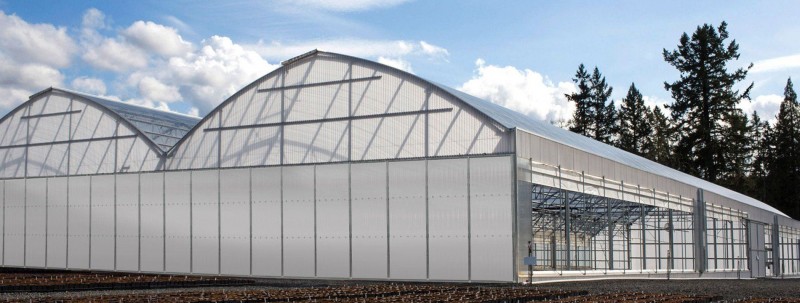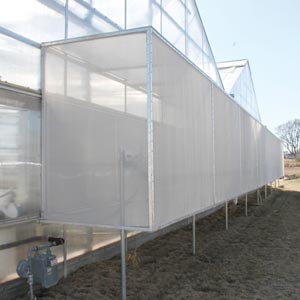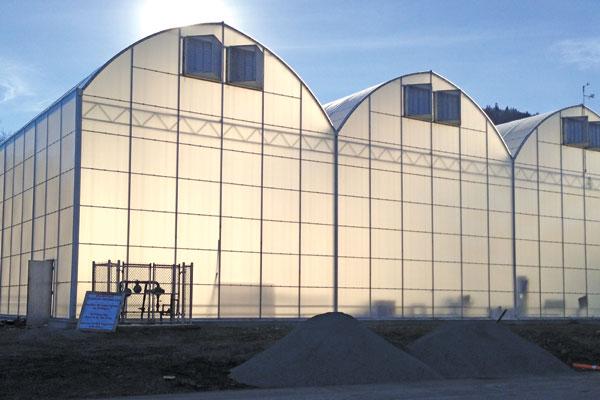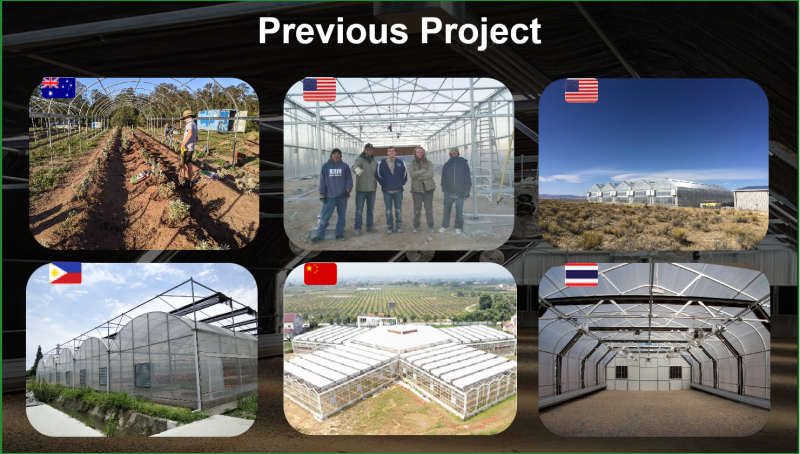Have you set up a greenhouse and are happy that cucumbers and tomatoes in it ripen earlier and last longer? Believe me, this is not all that the greenhouse is capable of. You can harvest three crops in one warm season in a greenhouse . Doubt? Now we will tell you how to grow three crops in a greenhouse in the same growing season!

In this article we will talk about a greenhouse covered with cellular polycarbonate and installed on a foundation. We offer to grow in a greenhouse the crops, that you can find in any garden. But if you prefer other vegetables and herbs, you can safely experiment, focusing on the timing of their ripening and the possibility of growing seedlings.
To harvest the first crop as early as possible, you need to prepare the greenhouse for the season at the end of autumn. You should remove the top layer of soil from the beds, wash the greenhouse after that, disinfect and ventilate it. To replace the soil that can be taken out into the garden, the same amount of compost and rotted manure is placed in the ridges, dug up and leveled. You can immediately add complex mineral fertilizers to the soil so that in spring the earth is completely ready to receive seeds and seedlings. In winter, you need to clean the snow from the roof and walls several times, and throw it into the greenhouse. So in the spring the soil will quickly be saturated with moisture, and you will not have to arrange additional watering.

In the new season, the preparation of the greenhouse begins in March, as soon as the first sunny days come. Cover the soil on the beds with a black film or geotextile so that it warms up faster. Usually, in such conditions, on April 1, you can already start sowing the first crops.
Next plants does not afraid of spring low temperatures and short daylight hours:
- radishes,
- onion sets,
- spinach,
- leaf and head lettuces,
- kohlrabi cabbage,
- dill,
- arugula
- and other green crops.
Water the ground with a growth stimulator and cover with a spunbond after sowing, . In the next couple of weeks, it is enough to water with warm water once per every 2 days so that the ground under the shelter does not have time to dry out. You can take the first harvest in mid-May.

They begin to pull out lettuces and radishes in those places where they plan to then plant seedlings of cucumbers, tomatoes, eggplants, peppers and other crops. This can be done day in and day out, but fertilizer must be applied before planting in the holes. While the seedlings are young and medium-sized, the surrounding greenery will not interfere with it.
When the first crop of greens is eaten, you can plant for your greenhouse crops and new companions. For example, another batch of young onions. In the greenhouse, it grows quickly, does not get sick, thanks to regular watering it turns out juicy and tasty, and with its pungent smell it repels insect pests. It is better to plant it around the perimeter of the beds, so as not to thicken the plantings.
Do not forget about top dressing. In order for the soil in the greenhouse to be able to support so many plants, it needs to remain fertile and filled with nutrients. Water the beds with a solution of liquid mullein (at the rate of 2 kg per bucket of water) and fertilizers according to the instructions in every 10 days. Once a month, water the beds with ash infusion (3 cups of ash per 10 liters of hot water and insist for a day). From the beginning of July, add phosphate fertilizers, such as superphosphate. Moreover, it is better to use it in liquid form. Dilute 100 g of simple superphosphate in 10 liters of hot water, cool and apply at the rate of 0.5 liters per 1 plant.
After July 20 in greenhouses, it is advisable to stop the development of tomatoes by pinching their growing point. After all, the conditions are favorable, summer is in full swing, and the bushes, unaware of the impending autumn, spend their energy on building up green mass, and not on fruiting. By mid-August, all the ovaries have time to gain weight, and they can be removed for ripening, so as not to provoke the development of late blight and not waste energy on its prevention and treatment.
Third crop in the greenhouse
After removing the tomatoes, plant other crops in their place. Before the cold weather, you will have time to get another crop of:
- early cabbage,
- spinach,
- lettuces and greens,
- radishes,
- early ripening turnip varieties,
- kohlrabi,
- green onions,
- etc.
However, the main trick for a polycarbonate greenhouse is the possibility of phased cultivation of cucumbers. The first batch of seedlings appears in the greenhouse at the same time as tomatoes (in May), grows and bears fruit until about mid-August, and then the number of fruits decreases. You should not torment the bushes with unnecessary dressings. It is better to plant a replacement for them in a timely manner. So, in late June & nbsp; – early July, plant seedlings of a few more bushes, for which prudently leave a corner of the ridge. As soon as 2 pairs of leaves appear on the seedlings, send it to the ground, and in August you will get young, actively fruiting bushes that will supply you with cucumbers until October.
It is not necessary to feed them additionally after planting, except perhaps a couple of times a month with nettle infusion. But one should not forget about abundant and regular (every 2-3 days) watering. Because cold nights and lack of moisture can cause cucumbers to start to taste bitter.
It is important to remember that after harvesting or if the frosts hit hard and the plants died even in the greenhouse, you can not leave them right in the ridges. All plant residues at the end of the season must be removed and sent either to compost or burned. You also need to take out, clean and disinfect the sides of the beds, tiles or rugs lying on the paths, the supports of the plants. It is on these details that insect pests often settle down for the winter, which can overshadow your summer season next year.
Of course, the period of growing vegetables and herbs in a greenhouse can be extended by installing a heating system. However, even without it, you can use a polycarbonate greenhouse from April to October and enjoy the harvest for half a year and grow up to three crops in greenhouse.
Before-sale: Professional sales consultant and engineer provide you the most suitable solutions.
Mid-sale: Update the details for customers for knowing their orders going on.
After-sale: Complete the installation video and drawing. Overseas engineer available for guiding the installation.

Looking for ideal greenhouse overall system Manufacturer & supplier ?We have a wide selection at good prices to help you get creative.All the related supporting facilities are quality guaranteed.We are China Origin Factory of Economic Greenhosue in Sale.
If you’re in need of a light deprivation solution, don’t hesitate to contact us.
Post time: Dec-28-2022






